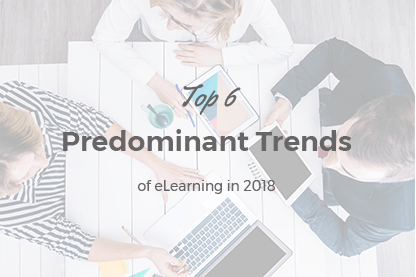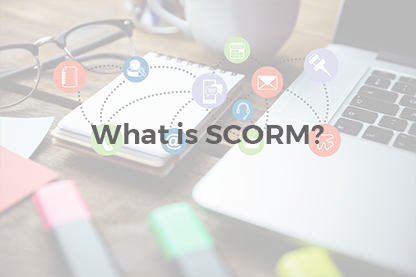People generally employ both visual and linguistic cognitive processes while learning. In other words, we learn by seeing, and we also learn when people instruct us.
But then, people learn better when image, sight, sound, and text all are used.
This is where multimedia elements come into the picture. However, there are several rules that need to be taken care of before we start crafting eLearning courses with the aid of multimedia tools. Here are 5 crucial tips to bear in mind while harnessing the power of multimedia for your eLearning courses.
#1. Marriage of Image and Language
Some students excel at visual learning versus auditory learning. But, the fact is both should be combined to enhance the learning process. Not long ago two Richards – Richard Mayer and Richard Anderson carried a study that influences cognitive learning theory even today. As per the study, they were educating students on the functioning of a bicycle pump. To make matters clear, the information was offered in the form of text, animation, and auditory instruction.
The result? Students who heard the narration and watched the video alongside were found to be really goodbetter at coming up with solutions thant those who simply heard the narration.
You could also try combining an image with a text format caption to improve learning significantly.
#2. Pairing Related Stuff
It’s observed that human mind automatically perceives the relationship between objects that are placed together or almost together. Say, for instance, the video that’s played above a blog post very well signifies that it’s a part of the post. The bottomline? Multimedia elements with regards to the same subject matter should be paired together.
By the same token, objects that are not related should be kept at a distance. That means you need to keep reasonable white space in between two unrelated related things. This will automatically trigger our minds to disconnect.
A small insight on Whitespace: As such there’s no rule of thumb as to how much white space is ideal between two related and two unrelated objects. But one thing is crystal clear in terms of white space is that leaving enough white space between two items enhances comprehensibility and reduces cognitive overload. I know what you are thinking.? How much whitespace then is right to increase comprehensibility of your eLearning course?
It differs from case -to- case. It mainly depends on the eLearning course layout, resolution, and more importantly, the consumption device. For instance, an e-learning course available on mobile has less whitespace given that mobile is low in real estate.
#3. Constant Hammering of Key Concepts
The benefits of repetition are not unknown. In the multimedia landscape, this means repeating the same info through various media outlets. Say, for instance, you not only create an online tutorial but also offer gamified eLearning experience to reinforce key concepts and ideas to improve knowledge retention.
The eLearning content shouldn’t be overdone. For instance, narration should be a tad different from the text that appears on the screen.
#4. Focus on Bite-sized Learning
More compellingly, it helps learners skip the unwanted parts and focus on those that are important for them.
As it turns out videos can prove to be the ultimate multimedia tool to convey messages effectively in the shortest possible time. More than anything else, you don’t need any great technical know-how or sophisticated equipment to shoot videos. If you have a smartphone, that’s about it, you can create videos anytime, anywhere.
#5. Stay away from Irrelevant Media
Sure, visually appealing eLearning courses are high on learner engagement. But, care should be taken that multimedia elements are not used just for the heck of it.
Multimedia should act as a complementary tool and enhance the eLearning content because it’s the latter that matters the most in terms of eLearning . There’s no place for irrelevant images, charts, images and audio that might take the audience’s attention away from the main content.
All said and done, it’s really vital to nail down the target audience before you start crafting your eLearning course complete with multimedia tools. And depending on their likes and dislikes, an eLearning course should be cautiously crafted. You can check out the following top content marketing companies to get your eLearning course accurately designed.

Jennifer Warren is a resident wordsmith with GoodFirms – a review and research platform for top digital marketing agencies. She is a full-time writer, part-time war movie monger, and an all-time bookworm. She has been writing for 12+ years, and this includes stints as a journalist, copywriter, ghostwriter and currently as a business blogger.










